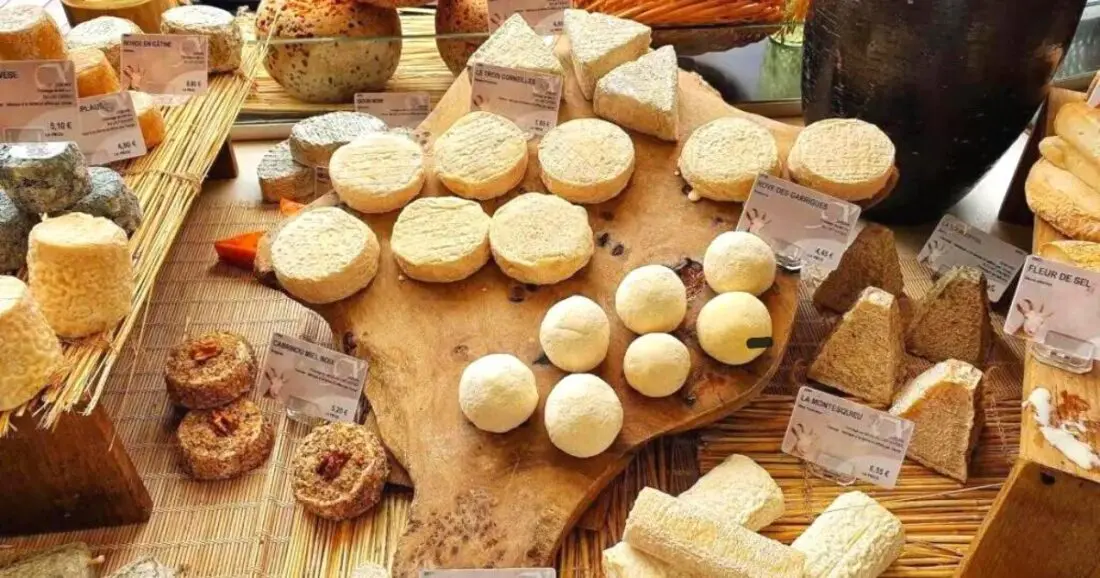A Beginner’s Guide to French Cheese
When you think of France, the first thing that comes to mind is probably its famous cuisine, with cheese being a central part of that.
But with France being home to more than 1,000 varieties of cheese, the world of French cheese can initially seem intimidating. However, it’s easy and enjoyable to get into if you approach it with some basic knowledge.
That’s why we’ve put together a beginner’s guide to French cheeses. We’ll run through some need-to-know information to begin your French cheese exploration. Then, we’ll pick a few of our favorite iconic French cheeses.
With this guide, we hope that your next journey to France will feature the sampling of lots of delicious cheeses. And if you are traveling in Toulouse, we invite you to join us for one of our Cheese & Wine Tasting Experiences in Toulouse or a gourmet food tour at the Victor Hugo Market, which wouldn’t be complete without a visit to one of the best fromageries in Toulouse.
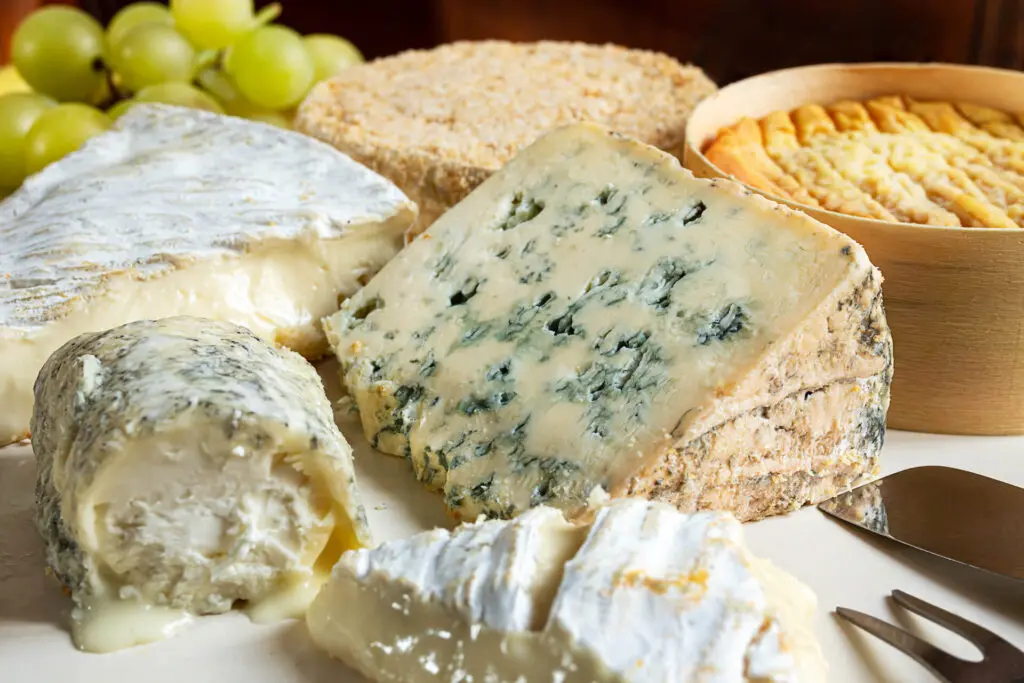
French Cheese 101
Before we look at the seven main types of French cheeses and some famous examples, let’s look at some useful concepts.
Terroir
Terroir is a term you may be familiar with if you’re interested in wine. It refers to the specific geographical and environmental characteristics that give a particular drink or foodstuff, such as cheese, its unique flavor, and its qualities.
In the case of French cheese, terroir includes factors such as the type of grass and other plants that the cows, goats, or sheep that produce the milk for the cheese eat, the climate and weather conditions of the region, and the specific techniques and traditions used by the cheesemakers.
(As an aside, if you love wine and are visiting Toulouse, please consider joining our Wine Bar Tour of Toulouse.)
AOC/AOP
Further terminology commonly associated with wine, AOC (Appellation d’Origine Contrôlée) and AOP (Appellation d’Origine Protégée) are systems in France that protect the names of certain agricultural products, including cheeses, to ensure that they are produced using traditional methods and are of a certain quality.
These systems are intended to protect these products’ reputation and authenticity and promote the traditional production methods and areas in which they are produced.
To be granted AOC/AOP status, a cheese must meet strict production methods, ingredients, and geographical origin criteria. Additionally, the cheeses must pass a taste test before being granted AOC/AOP status. Once a cheese has been granted AOC/AOP status, it can use the AOC/AOP logo on its packaging and is protected against imitation or misuse of its name.
Some French cheeses with AOC/AOP status are Roquefort, Comté, Camembert de Normandie, and Beaufort.
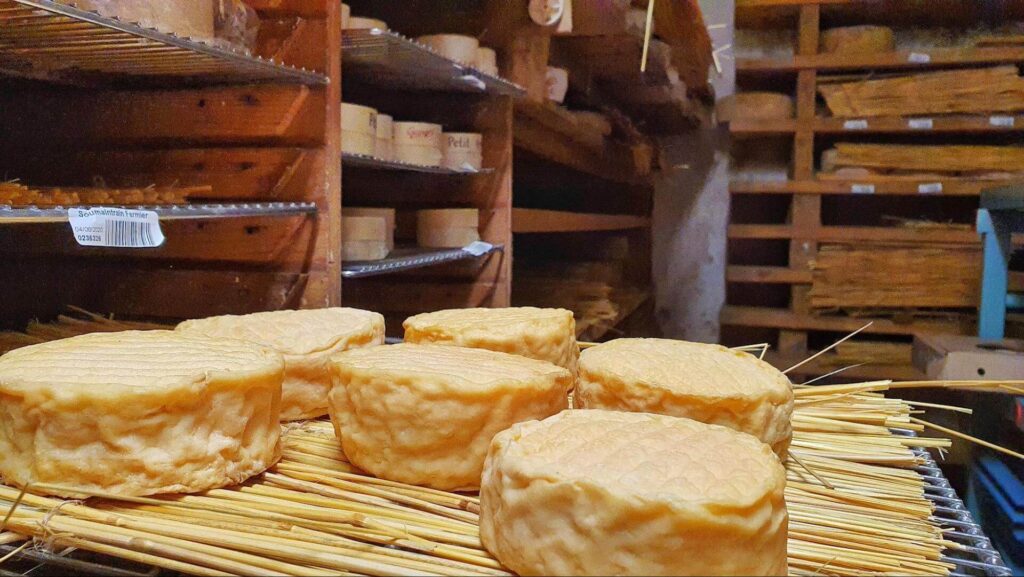
Raw Milk and French Cheese
Raw milk is considered to be of great importance in the production of many traditional French kinds of cheese. The use of raw milk, as opposed to pasteurized milk, is one of the key factors contributing to the unique flavor and characteristics of these cheeses.
Many traditional types of French cheese, such as Roquefort, Comté, Beaufort, and certain types of Camembert, must be made with raw milk under their AOC/AOP regulations. These regulations stipulate that the milk used must come from specific breeds of animals, be produced in a specific geographical area, and be processed within a certain time frame after milking.
The use of raw milk is believed to provide cheeses with a greater complexity of flavors and aromas, as well as a more delicate texture. Additionally, using raw milk allows for the natural microflora present in the milk to play a role in developing the cheese’s flavor and texture.
Regulations about the use of raw milk in cheesemaking vary quite a bit based on the country, so many French raw milk cheeses can be enjoyed only in France due to laws against their importation in other countries. So if you are lucky enough to be able to come to France, be sure to enjoy lots of “illegal” cheese!
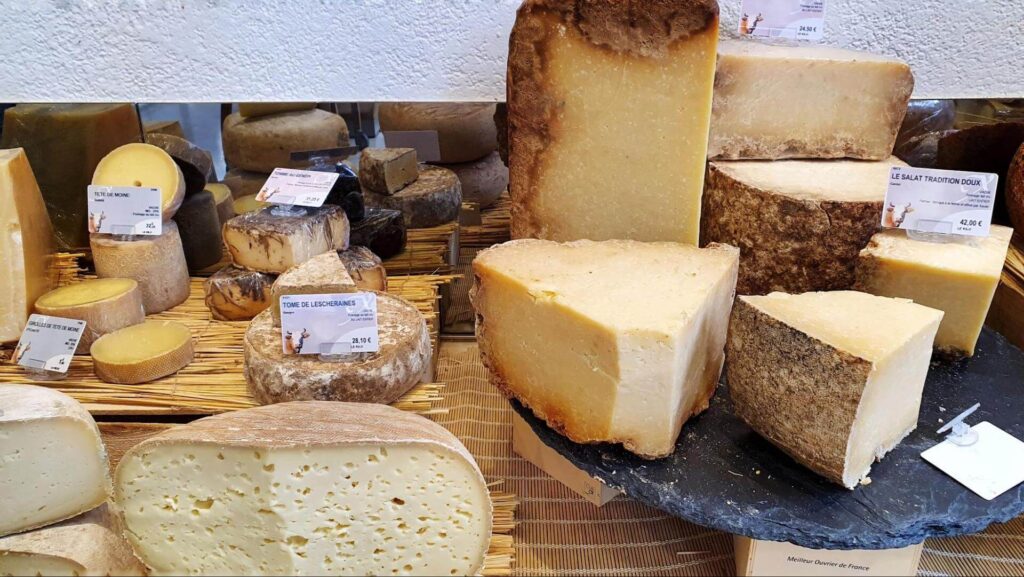
The Seven Main Types of French Cheese
Before looking at specific varieties of French cheese (there are over 1,000, remember), it’s best to learn the seven general types of French cheese. Normally, cheesemongers (fromagers in French) will arrange their cheeses into these broad types, making it easier to find the flavors you are looking for.
1. Fresh Cheese
Fresh cheeses are made from unripened curds, don’t have a rind, and are typically consumed soon after production. They are known for their mild, creamy flavor and soft texture.
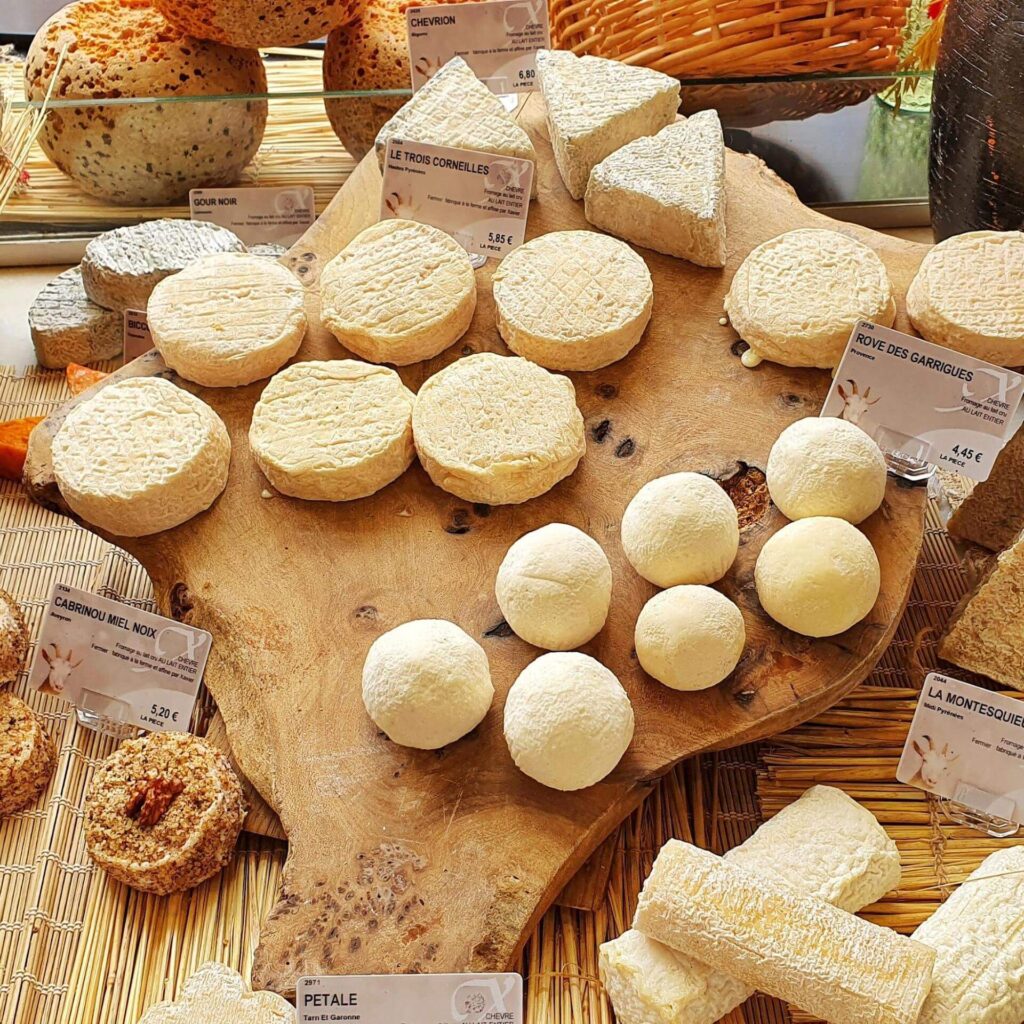
2. Chèvre
Chèvre is the French word for goat cheese. It is made from goat’s milk and has a tangy, slightly acidic flavor. Chèvre can come in a variety of forms, from young and soft to aged and firm, though the majority of French goat cheeses tend to be on the younger side. Examples of goat cheeses include Sainte-maure-de-touraine and Rocamadour.
3. Pressed-Cooked (Hard)
Pressed-cooked cheeses are made by heating the curds and then pressing them to remove the whey. They have a semi-hard or hard texture and a nutty, fruity flavor. Examples of pressed-cooked cheeses include Comté, Beaufort, and Emmental.
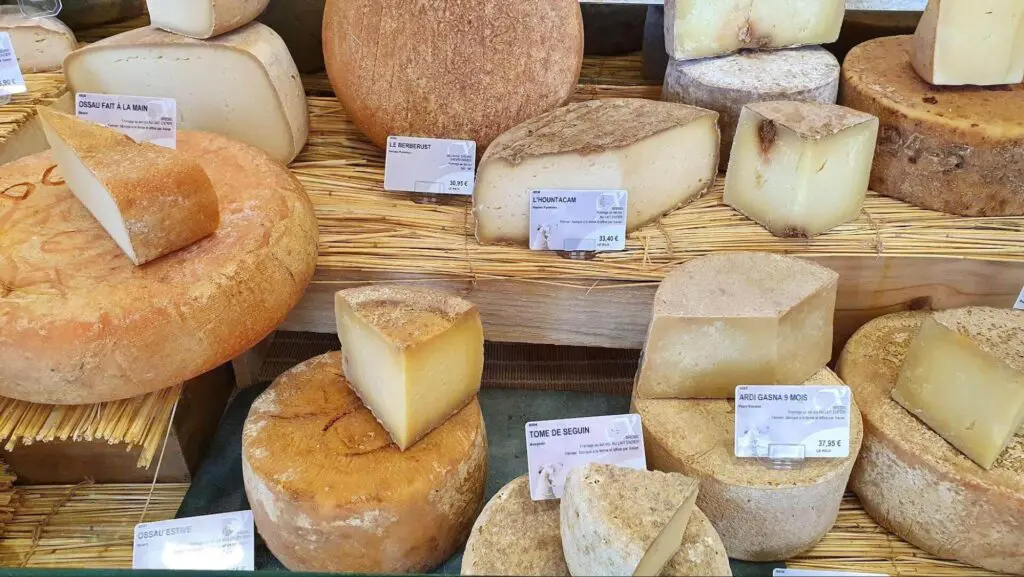
4. Pressed-Uncooked (Hard)
Pressed-uncooked cheeses are made by pressing the curds without heating them first. They usually have a slightly more “springy” texture and a stronger flavor than pressed-cooked cheeses. Examples of pressed-uncooked cheeses include Cantal, Morbier, and Ossau-Iraty.
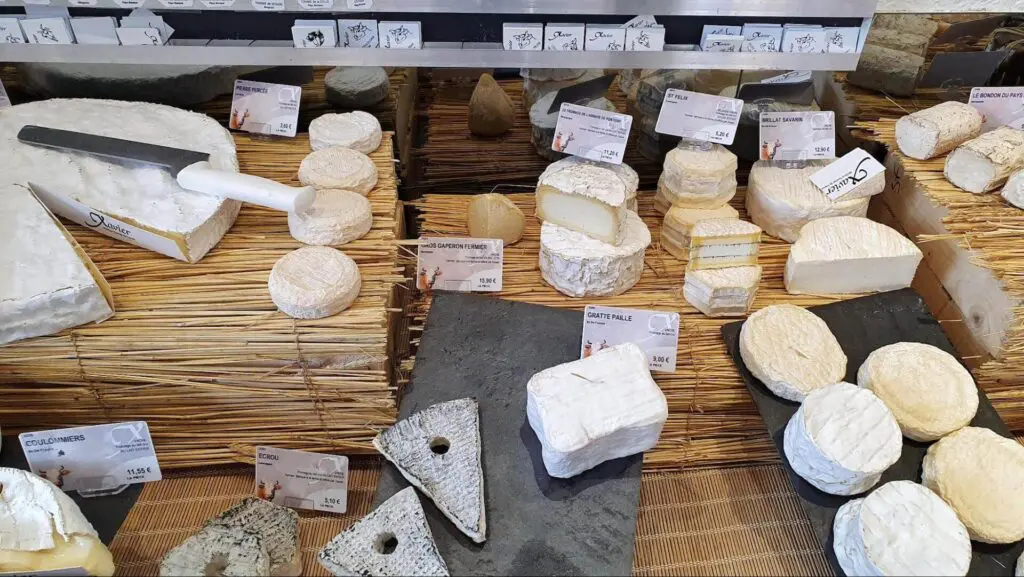
5. Bloomy Rind
Bloomy rind cheeses are those that have a white, fluffy rind that is caused by the growth of specific types of mold. They have a soft, creamy texture and a mild, earthy flavor. Examples of bloomy rind cheeses include Camembert and Brie.
6. Washed Rind
Washed rind cheeses are those that have a rind that is washed with a solution of salt water (or other liquids, like alcohol) and bacteria. This process gives the cheese a strong, pungent flavor and a soft, gooey texture. Examples of washed rind cheeses include Epoisses, Munster, and Reblochon.
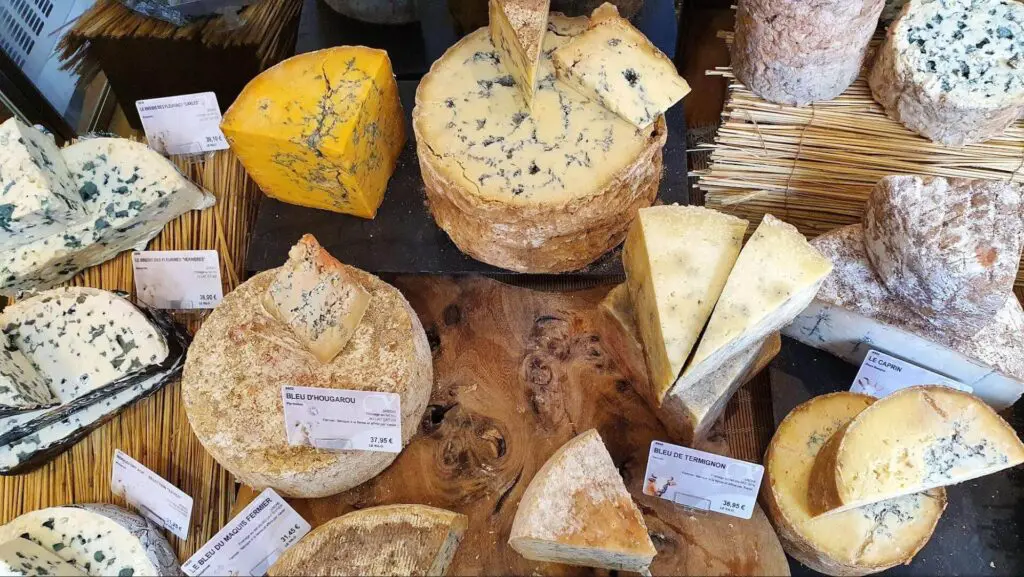
7. Blue Cheese
Blue cheeses are those that have blue or green veins of mold running through them. They have a strong, tangy flavor and a crumbly or creamy texture. Examples of blue cheeses include Roquefort and Bleu d’Auvergne.
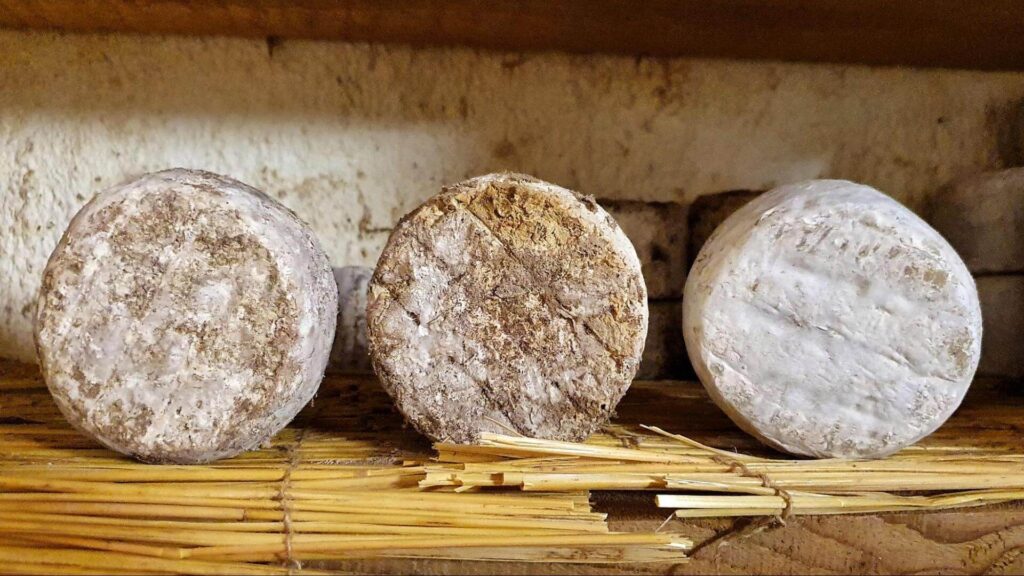
Useful Cheese-Tasting Vocabulary
Here are some essential vocabulary words for cheese tasting:
– Aroma: The smell or fragrance of cheese.
– Appearance: The visual characteristics of cheese, such as color, shape, and texture.
– Body: The texture and consistency of cheese.
– Flavor: The taste and overall impression of a cheese.
– Rind: The exterior surface of a cheese.
– Paste: The interior of the cheese
– Pasture: The type of vegetation where the animal grazed.
– Nutty: A flavor that is similar to nuts
– Creamy: A texture that is smooth and rich
– Pungent: A strong, sharp, and sometimes overwhelming smell or taste.
– Pasty: A texture that is smooth and thick
– Acidic: A tangy, sour taste.
– Salty: A taste that is salty
– Bitter: A taste that is bitter
– Sweet: A taste that is sweet
– Umami: A savory taste that is often described as “meaty” or “brothy.”
Tasting experiences are always unique to the individual. The notes that one taster may pick up may sound completely bizarre to someone else. Cheese tasting is as complex as tasting fine wines and whiskies. The most important part is enjoying yourself!
However, having a good base-level tasting vocabulary can really enrich your tasting experience, allowing you to dig deeper into the flavor profiles you’re exploring.
Tasting Cheese Like a Professional
Tasting cheese like a pro combines sight, smell, and taste.
Begin with the appearance of the cheese: observe its color, shape, and texture. Then, smell the cheese to get a sense of its aroma. Finally, taste the cheese. Begin with a small bite of the and let it sit on your tongue for a few seconds before you start to chew. Pay attention to the texture, flavor, and aftertaste.
If you really want to expand your knowledge of French cheese (or cuisine, more generally), consider keeping a record of the cheeses you taste and the impressions you have.
This will help you remember each cheese’s characteristics and recognize them in the future.
We also recommend that you experiment with pairing cheeses with various complimentary foods and drinks. It is amazing how a successful pairing can elevate our enjoyment of cheese.
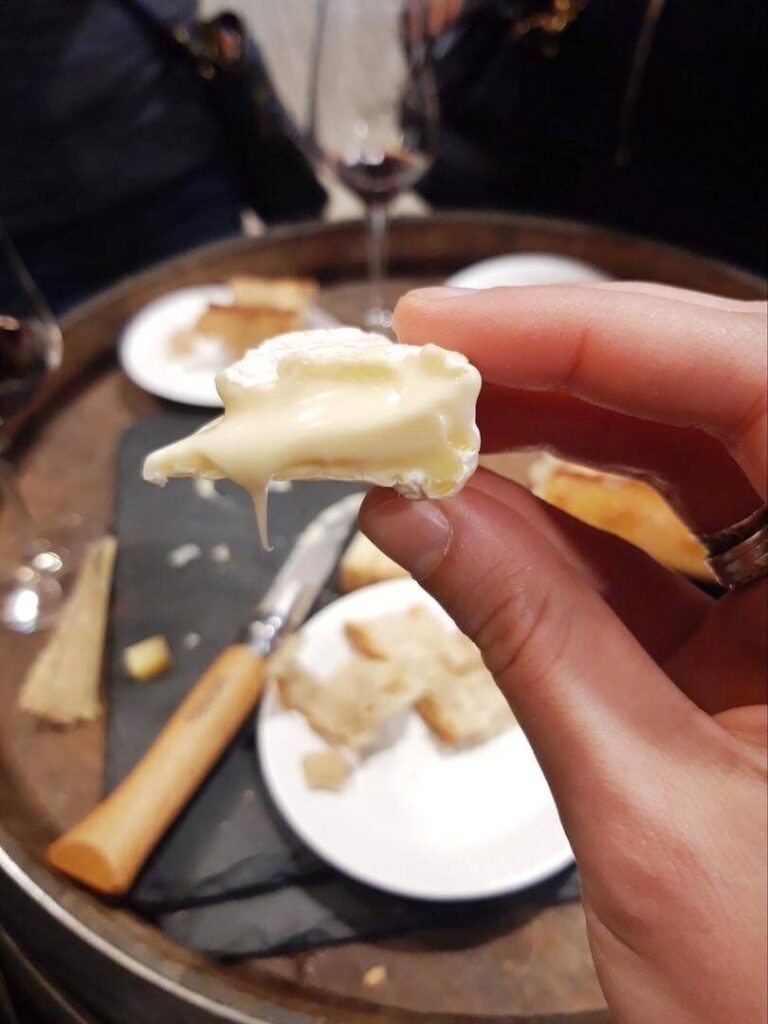
Famous French Cheeses to Begin With
We’ll end our beginner’s guide to French cheese with an outline of four of our favorite French cheeses. We’ve selected famous varieties, so it should be simple to find quality examples of these cheeses wherever you live.
Comté
Comté is a hard cheese from the Jura region of Burgundy. Made with raw cow’s milk, it has a rich, nutty flavor and a fruity aroma. The cheese is aged for at least four months before it can be sold as Comté AOP (Appellation d’Origine Protégée). At 4-8 months, the cheese will be mild, fruity in flavor, and better adapted for use in cooking (fondue anyone?). For eating by itself, we recommend looking for a minimum of 9 months of aging – but more if you can find it! Our favorite Comté has been aged for 24-48 months.
Beaufort
Beaufort is a cow’s-milk yellow to orange cheese from the Savoie region in France. It is made from raw cow’s milk, which gives it its distinctive flavor and light color. This hard cheese has a creamy texture and sweet taste. The Beaufort appellation d’origine contrôlée (AOC) was created by decree on July 21, 1975. Look for the words “Beaufort d’Alpage” for an extra-special treat – this exclusive type of Beaufort is made from the cows’ summer milkings as they graze on hundreds of different grasses and flowers in Alpine mountain pastures.
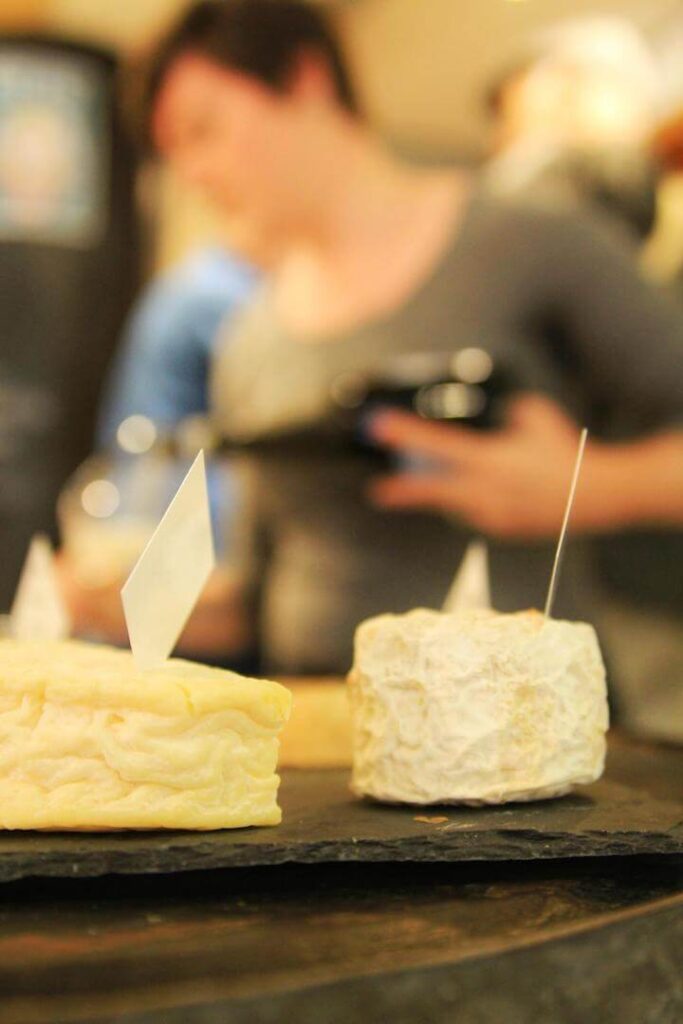
Brie de Meaux
Brie de Meaux is a soft and creamy cheese with a white rind made in France’s Champagne region. It’s incredibly versatile; you can eat it on its own or serve it as an appetizer with crackers, fruit, nuts, and wine.
The best way to enjoy brie is to slice it thin and pair it with bread or crackers. This will help you appreciate the cheese’s subtle flavor and creamy texture.
Munster-Géromé
You may have seen this cheese in the refrigerated section of your supermarket. It’s aged for three months and has a strong, earthy flavor. It also works well as an ingredient in many classic French dishes.
Ossau-Iraty
Ossau-Iraty is made from the milk of indigenous sheep from France’s Basque region, the Manech ewes. It has a nutty and slightly sweet flavor, with notes of grass and hay. It has a firm and smooth texture and a natural rind.
The taste can vary depending on how long it has been aged, with younger versions having a milder flavor and older versions having a stronger, more robust taste. It is also AOC (Appellation d’Origine Contrôlée) protected, guaranteeing a high-quality product that consistently delivers a unique and delicious taste experience.
Ossau-Iraty pairs well with a variety of foods. You can enjoy it with crusty bread and a glass of red wine, or with some fresh fruit such as pears, apples, or figs. Its versatility also makes it a great ingredient for cooking. Try adding Ossau-Iraty to your homemade gratin or quiche – delicious.
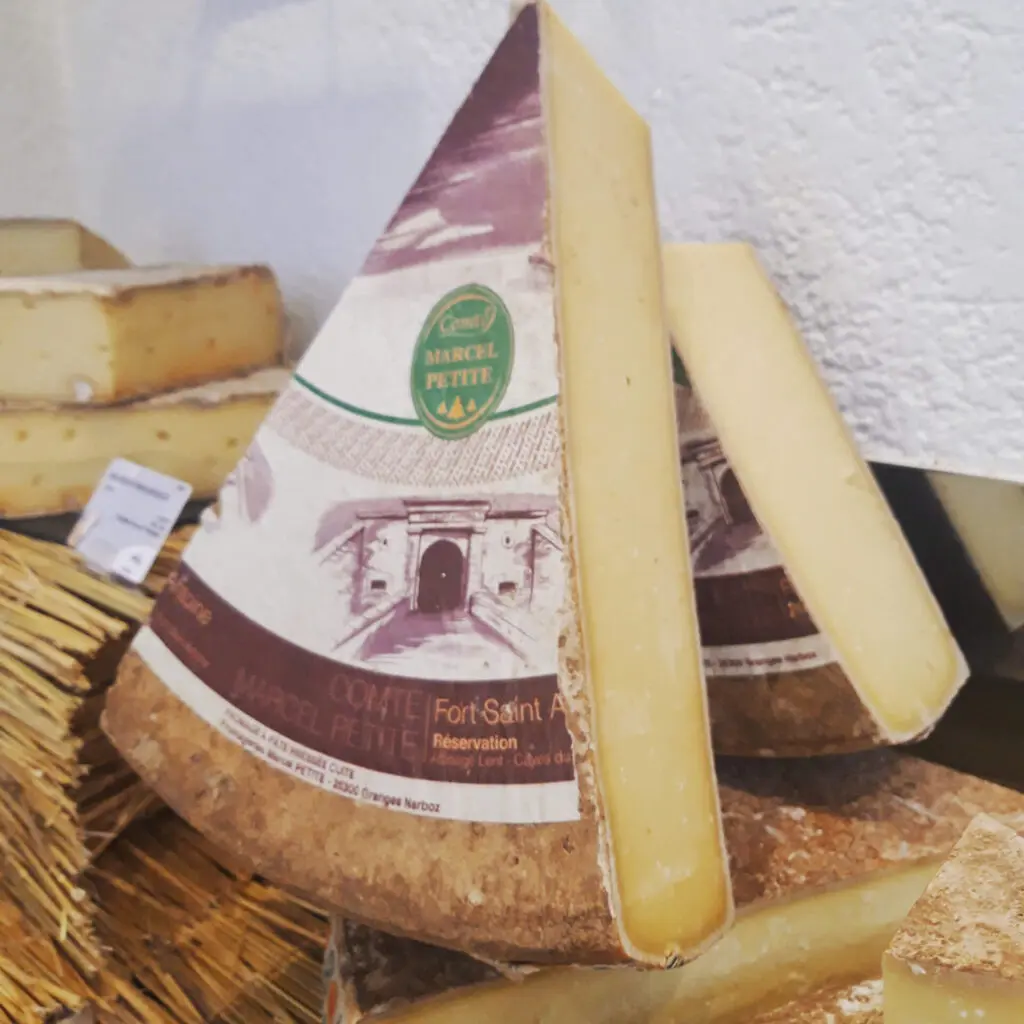
We hope this guide has helped you get started in the wonderful world of French cheeses. Explore the Taste of Toulouse blog to learn more about the magical world of French food.
And if you’re in Toulouse, please consider joining our dedicated Cheese & Wine Tasting – sample delicious French cheeses and local AOC Toulouse wines and discuss what goes into preparing a successful pairing menu.



